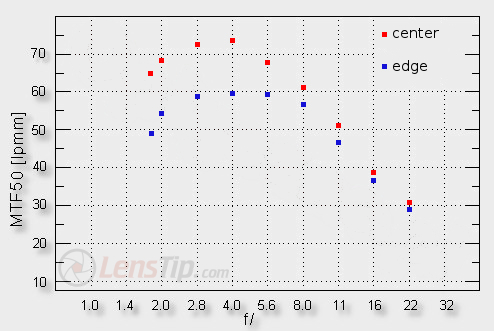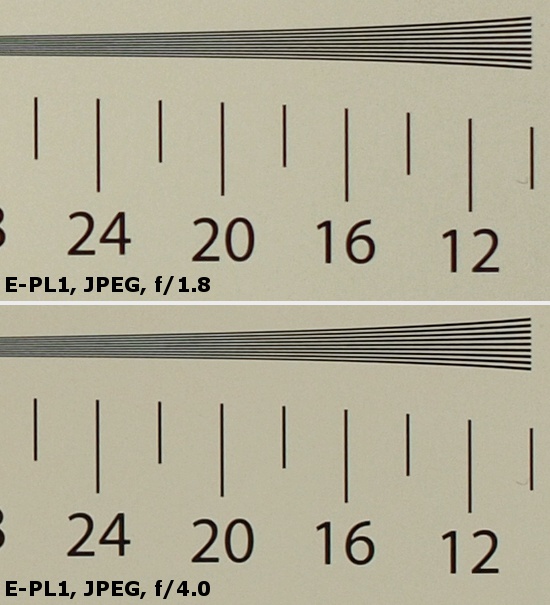Olympus M.Zuiko Digital 25 mm f/1.8
4. Image resolution
Now let’s glance at the graph shown below and check how the tested lens compares.

Please Support UsIf you enjoy our reviews and articles, and you want us to continue our work please, support our website by donating through PayPal. The funds are going to be used for paying our editorial team, renting servers, and equipping our testing studio; only that way we will be able to continue providing you interesting content for free. |
- - - - - - - - - - - - - - - - - - - - - - - - - - - - - - - - - - - - - - - - - - - - - - - -
The Olympus 1.8/25 doesn’t lack competitors because there are a lot of devices with similar parameters: the Panasonic 1.7/20, the Leica 1.4/25 or the aforementioned Voigtlander 0.95/25. Looking at the presented graph you can notice that the Olympus didn’t manage to reach such an outstanding level as the Vogtlander but, after all, nobody expected that much. The differences in price and aperture are too significant.
On the other hand the Olympus can compete successfully with the Panasonic 1.7/20 or the Leica 1.4/25 – mainly because it has good results at the maximum relative aperture where the MTFs get as high as 65 lpmm, 4 lpmm higher than in the case of the Panasonic. On stopping down all the three lenses show similar results. A level of 73-75 lpmm can’t be perhaps called outstanding but still it should be considered very good.
When it comes to the frame edge the Olympus can be praised once again for results reached in the area near the maximum relative aperture – the lens is fully useful there and it fares even better than the Leica and the Panasonic. The Panasonic 1.7/20, however, is a “pancake” lens so you can’t be too demanding when it comes to its frame edge; a bit better performance of the Olympus is hardly something surprising here. It is interesting, though, that the slower and cheaper Olympus can provide useful images already by f/1.8 and the Leica has to be stopped down to f/2.2-2.5 in order to achieve the same result. Still the astigmatism, which will be described later in more detail, doesn’t allow the Olympus to spread wing after stopping down; that’s why near f/2.8-5.6 the Leica prevails.
To sum up the Olympus 1.8/25 doesn’t break any resolution records but it performs as well as you might expect a solid lens should – it provides fully useful images up from the maximum relative aperture and can reach very high MTFs on stopping down.
Below you can see crops of our testing chart photos saved as JPEG files. Let’s remind you that those JPEGs were shot with the lowest sharpening level available but, in the case of Micro 4/3 cameras, it still remains relatively high.
 |






